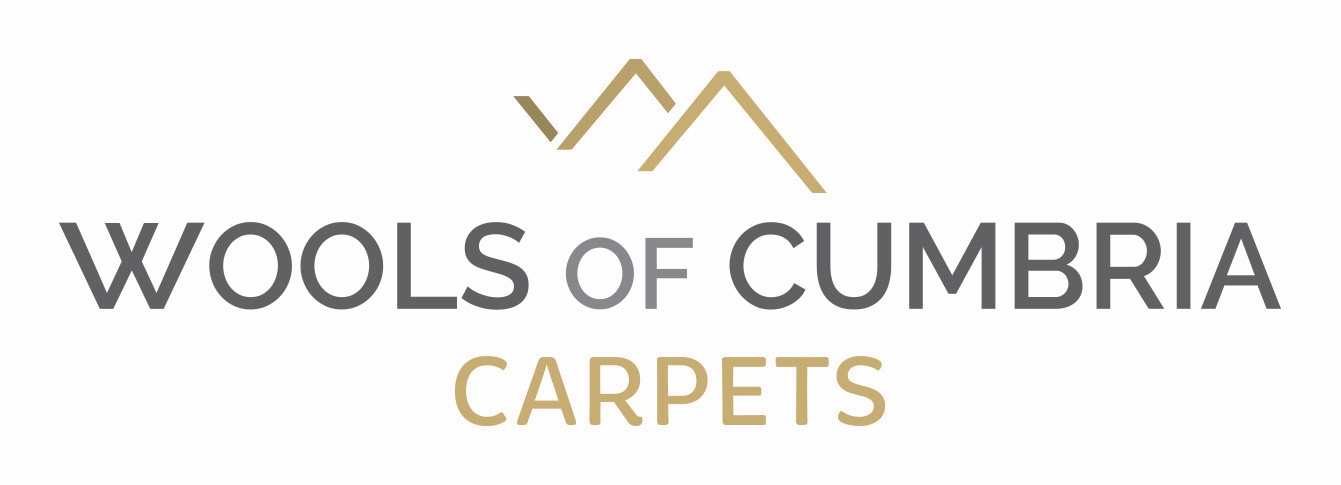Much love and care goes into every carpet we make. From fleece to floor, we supervise every individual process to ensure it meets our high-quality standards. Here’s a run-down of the journey every wool fleece takes before gracing your floors.
Shearing
- The farmer bags up his sheared wool in 'sheets' and takes it to the depot at Carlisle. From here it is collected by lorry and taken to the British Wool Marketing Board for grading.
Sorting & grading
- Herdwick wool is sorted and graded into types 718 Light Grey and 719 Dark Grey. Swaledale is graded into 4 types, 707, 708, 709 & 710. Each batch within a grade may be inspected by potential buyers before auction. After sale, the wool is taken to be scoured. Rough Fell is graded into 2 types, 720 & 721.
Scouring
- The wool is washed, dried and press-packed into approximately 300 kilogram bales. Any individual can buy wool like this, however most is taken by merchants who sell to yarn spinners. We buy our wool from merchants and send it to the spinner for processing. On receiving processing instructions, the spinner commits the wool to blending.
Blending
- ‘Blending' opens the wool up and mixes it evenly while removing dust and any residual dirt.
Oiling
- The opened 'fluffy' wool is blown into a bin and is then passed through an oiling process and in to a packing machine. The oil is a synthetic, water-soluble lubricant which helps the fibres through the following processes.
Carding
- The oiled blend is put into a carding machine which breaks up the locks and unorganised clumps of fibre and aligns them so that they are more or less parallel. This is a long machine consisting of several parts. It has a hopper at one end, a computer-controlled feed sheet and a series of large and small rollers clothed with wire which pass the material through the machine whilst 'working' the fibres. At the far end, the even web of fibres passes through tapes which cut it up into individual strands which are then wound onto bobbins.
Spinning
- The bobbins are moved to a spinning frame - a machine which drafts (pulls and finally evens out the fibre distribution) and twists the strands into a yarn to give it strength.
Twisting
- Twisting is a process which twists 2 or more yarns together with a specified amount of twist and to the final thickness required for the product. For our cut pile product, 2 single ends of yarn are put together and then twisted with a high folded twist. Our loop product requires 3 single ends of yarn to be plied together with a low folded twist.
Reeling
- The twisted packages of yarn are then put in to a reeling machine which winds the yarn into 3 kilogram hanks. These hanks are bundled together and packed for sending to the wet-processor.
Scouring and dyeing
- Our Graphite yarns are scoured and twist-set so that all residual oil and dirt is removed and the yarn will perform in the final carpet without losing its definition.
- Our Colourwash yarns are scoured and over-dyed to a particular shade. A large 'pom' of the bespoke dyed shade is then submitted to the customer for approval.
Cone winding
- Each Graphite or Colourwash yarn is dried and then cone-wound. This involves winding yarn on to so many cones in readiness for the subsequent carpet-making process.
Tufting
- 142 cones (for 4 metre wide carpet) are put onto a creel and the yarn fed through the needles, spaced 8 to every inch width in the tufting machine for our product. The pile weight (density of yarn) and pile height can also be adjusted to suit the final product. The yarn is sewn through a primary backing and cut to produce a 'u'-shaped tuft and the cloth is run through the machine to the full length of the roll. This is called a 'pass'. Several passes are then made across the carpet to the desired width of 4 or 5 metre. The roll of approximately 30 linear metres is then un-rolled and inspected for faults and mended before being sent for backing.
Shearing and backing
- The 'soft' cloth is run through a finely adjusted shearing machine which takes only half a millimetre off the longest tuft. It has the effect of producing a perfectly level finish on the pile of the carpet. It is then put through a machine which spreads latex evenly on the underside of the cloth to lock in the tufts. Whilst it is still wet, a hessian backing cloth is applied to the latex and then the carpet is run through an oven which dries the backing and also 'bursts' the pile to give a bulky even finish.
Warehousing
- The finished carpet is collected and taken to our warehouse in Kendal where it is inspected and then put in the rack awaiting instructions for cutting and distribution.

